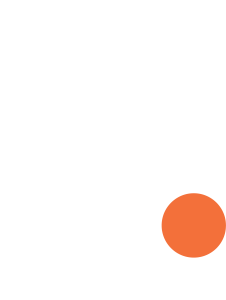FAQS
Frequently Asked Questions
What types of wood that are used for pet products?
At Dak Lak Manufacturing, we used below types of wood for our products:
- Pine Wood:
Advantages: Generally less expensive and lighter than hardwoods, making it easier to move pet houses if needed.
Considerations: May not be as durable as Oakwood.
- Plywood (Exterior Grade):
- Advantages: More affordable than solid wood.
Considerations: Can not product all shapes.
- MDF Wood:
- Advantages: Extremely durable and resistant to rot and insects.
Considerations: Can not product all shapes.
- Oak Wood:
Advantages: Sturdy, beautiful, and long-lasting.
Considerations: Can be more expensive.
Do Plywood and MDF wood contain chemicals that are harmful to pets?
With Pet World products, we ensures that all chemicals used in our wood do not contain ingredients that are harmful to your pet. You can test the ingredients in any of our woods.
What are wood coatings that is safe for pet?
Your furry friends mean the world to you. So, choosing a wood finish that’s safe for them is crucial. Wood finishes can be toxic to pets if they chew or lick treated surfaces. It’s essential to select pet-safe options that do not compromise on durability. Explore the best pet-safe wood finish options suited for every petloving home.
- Natural Oil Finishes
Natural oil finishes offer a safe solution for pets and their owners. They emanate from renewable resources and minimize environmental impact. Oils like tung, linseed, and walnut are popular options. They seep into the wood, protecting from within and resulting in a beautiful, satin finish.
- Tung Oil: Creates a water-resistant finish.
- Linseed Oil: Enhances wood grain’s appearance.
- Walnut Oil: Quick to dry and easy to apply.
Water-based Polyurethanes
Water-based polyurethanes are low-odor and low-VOC, making them perfect for pet-friendly homes. They dry fast and maintain the wood’s natural color. Not only do they resist stains and scratches, but they are also easy to clean.
- Qualities: Benefits
- Fast Drying: Reduces pet exposure time
- Low Odor: Comfortable home environment
- Clear Finish: Preserves natural wood beauty
Wax-based Sealants
Wax-based sealants provide a non-toxic barrier on wood surfaces. Beeswax and carnauba wax are top choices for pet owners. They bolster the wood’s durability against scratches and spills. Plus, wax sealants maintain a soft sheen that highlights the wood’s natural allure.
- Apply with a soft cloth.
- Buff for a lustrous finish.
- Reapply as needed for maintenance.
When searching for pet-friendly wood finishes, certain characteristics stand out:
- Low VOCs: Volatile Organic Compounds, or VOCs, are minimal in pet-safe finishes, reducing potential health risks.
- Fast-Drying: Quick-dry formulas limit the time surfaces are susceptible to curious pets.
- Non-toxic: The composition is safe for pets even if ingested in small amounts.
- Durability: Finishes must withstand the wear and tear of pets’ claws and teeth. A balance of these features ensures a finish is both durable for furniture and safe for pets.
Which types of material that usually used for Cat Scratcher?
In Pet World, we used Enviromentally Friendly Material:
Sisal Material
- Durable and withstands heavy use.
- Appeals to cats due to its texture.
- Helps shed the outer sheath of claws, keeping them sharp.
- Environmentally friendly – Cardboard / Corrugated Cardboard
- Inexpensive and environmentally friendly.
- Cats find the texture perfect for scratching.
- Easily shaped into different forms and sizes.
- Wears out quickly but can be replaced easil.
What types of Payment Term that is available with Pet World?
When it comes to international trade, several payment methods are used when you work with Pet World:
Cash In Advance (CIA):
- Importers pay the full amount before receiving the shipment.
- Often done via Telegraphic Transfer (TT), where funds are electronically transferred from the importer’s bank account to the exporter’s.
- Exporters prefer this method to avoid default risks.
- Buyers may be hesitant due to upfront costs.
Open Account (OA):
- Exporters ship goods before receiving payment.
- Trust-based system where buyers pay after delivery.
- Requires a strong relationship and trust between parties.
- Riskier for exporters, but common in established partnerships.
Letter of Credit (LC):
- A bank guarantee that ensures payment to the exporter.
- Buyer’s bank issues an LC, promising to pay upon receipt of specified documents.
- Provides security for both parties.
- Commonly used for large transactions or with new buyers.
Documentary Collections (DC):
- Intermediary process involving banks.
- Exporter’s bank collects payment from the buyer’s bank.
- Documents (such as bills of lading) are exchanged for payment.
- Less secure than LC but more flexible.
Consignment:
- Goods are sent to the buyer, but ownership remains with the exporter until sold.
Payment occurs after the goods are sold. - Suitable for long-term partnerships and high trust levels.
Which Incoterm Pet World can provide?
We can provide below incoterm when you work with us:
FOB (Free On Board):
- The seller delivers the goods on board the vessel at the named port of loading.
- The buyer covers the main carriage costs and assumes risk from that point onward.
CIF (Cost, Insurance, and Freight):
- The seller delivers the goods on board the vessel at the named port of loading.
- The seller also arranges and pays for insurance and freight to the named port of destination.
- The buyer assumes risk after the goods are on board.
EXW (Ex Works):
- The seller makes the goods available at their premises or another named place.
- The buyer is responsible for all costs and risks from that point onward.
DDP (Delivered Duty Paid):
- The seller delivers the goods to the buyer’s premises, fully cleared for import.
- The seller covers all costs, including duties and taxes


